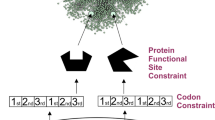Abstract
Patterns of network connection of members of multigene families were examined for two biological networks: a genetic network from the yeast Saccharomyces cerevisiae and a protein–protein interaction network from Caenorhabditis elegans. In both networks, genes belonging to gene families represented by a single member in the genome (“singletons”) were disproportionately represented among the nodes having large numbers of connections. Of 68 single-member yeast families with 25 or more network connections, 28 (44.4%) were located in duplicated genomic segments believed to have originated from an ancient polyploidization event; thus, each of these 28 loci was thus presumably duplicated along with the genomic segment to which it belongs, but one of the two duplicates has subsequently been deleted. Nodes connected to major “hubs” with a large number of connections, tended to be relatively sparsely interconnected among themselves. Furthermore, duplicated genes, even those arising from recent duplication, rarely shared many network connections, suggesting that network connections are remarkably labile over evolutionary time. These factors serve to explain well-known general properties of biological networks, including their scale-free and modular nature.





Similar content being viewed by others
References
Altschul SF, Madden TL, Schäffer AA, Zhang J, Zhang Z, Miller W, Lipman DJ (1997) Gapped BLAST and PSI-BLAST: a new generation of protein database search programs. Nucleic Acids Res 25:3389–3402
Barabási A-L, Albert R (1999) Emergence of scaling in random networks. Science 286:509–512
Felsenstein J (1985) Confidence limits on phylogenies: an approach using the bootstrap. Evolution 39:783–791
Friedman R, Hughes AL (2001a) Gene duplication and the structure of eukaryotic genomes. Genome Res 11:373–381
Friedman R, Hughes AL (2001b) Pattern and timing of gene duplication in animal genomes. Genome Research 11:1842–1847
Hughes AL, Friedman R (2003) Parallel evolution by gene duplication in the genomes of two unicellular fungi. Genome Res 13:794–799
Hughes AL, Friedman R (2004) Differential loss of ancestral gene families as a source of genomic divergence in animals. Pro R Soc Lond B (Suppl) 271:S107–S109
Kanehisa M (2000) Post-genome informatics. Oxford University Press, Oxford
Kellis M, Birren BW, Lander ES (2004) Proof and evolutionary analysis of ancient genome duplication in the yeast Saccharomyces cerevisiae. Nature 428:617–624
Kimura M (1977) Preponderance of synonymous changes as evidence for the neutral theory of molecular evolution. Nature 267:275–276
Kumar S, Tamura K, Jakobsen IB, Nei M (2001) MEGA2: molecular evolutionary genetics analysis software. Bioinformatics 17:1244–1245
Li S, Armstrong CM, Bertin N, Ge H, Milstein S, Boxem M, Vidalain P-O, Han J-D J, Chesneau A, Hao T, Goldberg DS, Li N, Martinez M, Rual J-F, Lamesch P, Xu L, Tewari M, Wong SL, Zhang LV, Berritz GF, Jacotot L, Vaglio P, Reboul J, Hirozane-Kishikawa T, Li Q, Gabel HW, Elewa A, Baumgartner B, Rose DJ, Yu H, Bosak S, Sequerra R, Fraser A, Mange SE, Saxton WM, Strome S, van den Heuvel S, Piano F, Vandenhaute J, Sardet C, Gerstein M, Doucette-Stamm L, Gunsalus KC, Harper JW, Cusick ME, Roth FP, Hill DE, Vidal M (2004) A map of the interactome network of the metazoan C. elegans. Science 303:540–543
Nei M (1987) Molecular evolutionary genetics. Columbia University Press, New York
Ravasz E, Barabási A-L (2003) Hierarchical organization in complex networks. Phys Rev E 67:026112
Ravasz E, Somera AL, Mongru DA, Oltvai ZN, Barabási A-L (2002) Hierarchical organization of modularity in metabolic networks. Science 297:1551–1555
Saitou N, Nei M (1987) The neighbor-joining method: a new method for reconstructing phylogenetic trees. Mol Biol Evol 4:406–425
Seoighe C, Wolfe KH (1999) Updated map of duplicated regions in the yeast genome. Gene 238:253–261
Strimmer K, van Haeseler A (1996) Quartet puzzling: a quartet maximum-likelihood method for reconstructing tree topologies. Mol Biol Evol 13:964–969
Swofford DL (2002) PAUP*: phylogenetic analysis using parsimony (*and other methods). Sinauer, Sunderland MA
Thompson JD, Higgins DG, Gibson T (1994) CLUSTALW: improving the sensitivity of progressive multiple sequence alignment through sequence weighting, position–specific gap penalties and weight matrix choice. Nucleic Acids Res 22:4673–4680
Tong AHY, Lesage G, Bader GD, Ding H, Xu H, Xin X, Young J, Berriz GF, Brost RL, Chang M, Chen Y, Cheng X, Chua G, Friesan H, Goldberg DS, Haynes J, Humphries C, He G, Levinson JN, Lu H, Ménard P, Munyana C, Parsons AB, Ryan O, Tonikian R, Roberts T, Sdicu A-M, Shapiro J, Sheikh B, Suter B, Wong SL, Munro S, Sander C, Rine J, Greenblatt J, Peter M, Bretscher A, Bell G, Roth FP, Brown GW, Andrews B, Bussey H, Boone C (2004) Global mapping of the yeast genetic interaction network. Science 303:808–813
Wagner A (2001) The yeast protein interaction network evolves rapidly and contains few redundant duplicated genes. Mol Biol Evol 18:1283–1292
Wolfe KH, Shields DC (1997) Molecular evidence for an ancient duplication of the entire yeast genome. Nature 387:708–713
Yang Z (1997) PAML: a program package for phylogenetic analysis by maximum likelihood. Comput Appl Biosci 13:555–556
Yang Z, Nielsen R (2000) Estimating synonymous and nonsynonymous substitution rates under realistic evolutionary models. Mol Biol Evol 17:32–43
Acknowledgments
This research was supported by Grant GM 043940 to A.L.H. from the National Institutes of Health.
Author information
Authors and Affiliations
Corresponding author
Additional information
[Reviewing Editor : Dr. Manyuan Long]
Rights and permissions
About this article
Cite this article
Hughes, A.L., Friedman, R. Gene Duplication and the Properties of Biological Networks. J Mol Evol 61, 758–764 (2005). https://doi.org/10.1007/s00239-005-0037-z
Received:
Accepted:
Published:
Issue Date:
DOI: https://doi.org/10.1007/s00239-005-0037-z




